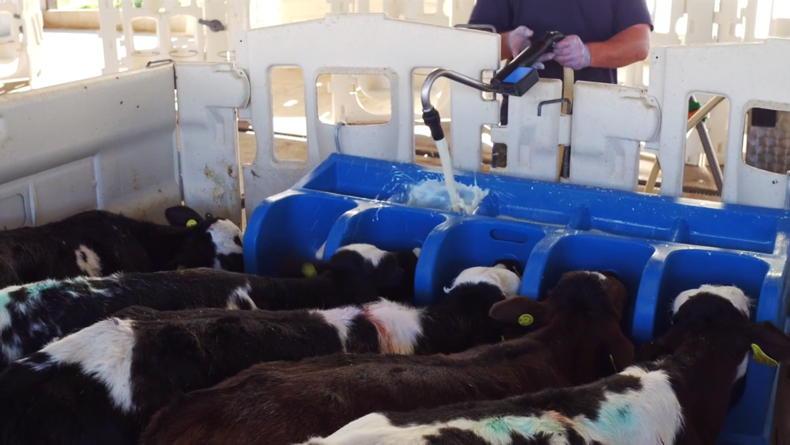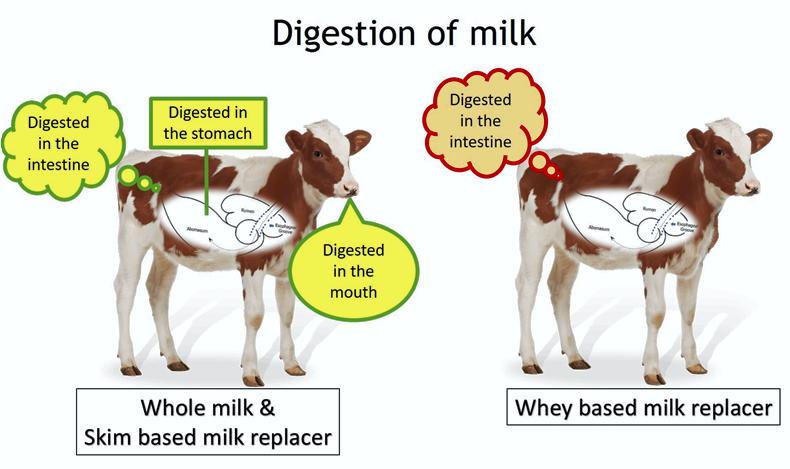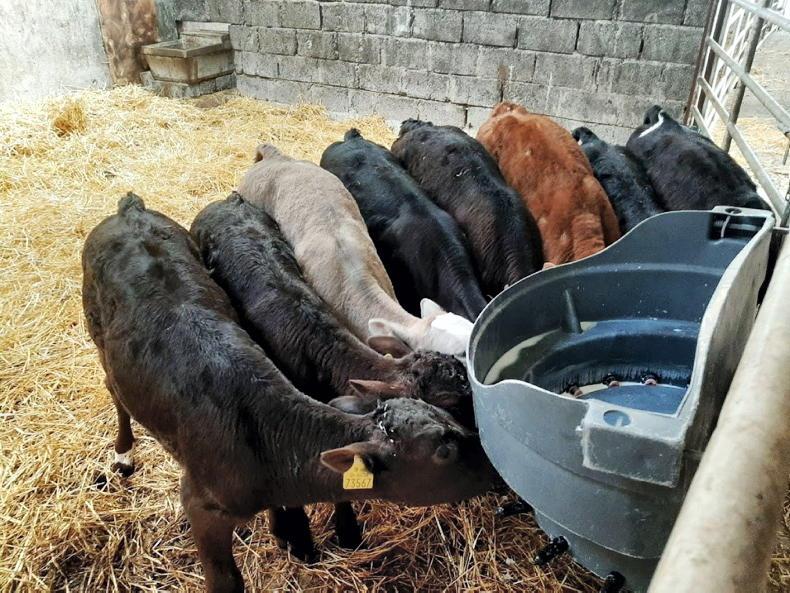Advice around this subject was the theme of a recent CalfChat event hosted by Bonanza Calf Nutrition.

The pre-weaning period is when calves are milk-fed, typically the first two to three months of their life.
It is when the calf is at their most efficient at converting feed into growth, therefore maximising the potential of the calf to do this is key to achieving optimum performance.
A CalfChat poll showed that the majority of participants - 62% - placed their focus on having a healthy calf, while for 24%, growth was a priority and for 9.5%, rumen development.
As all areas of calf rearing are interlinked, if animals are healthy, everything else will fall into place, says Dr Christine Cummins of Bonanza Calf Nutrition.
“Having an understanding of the gut and its development is important, as this ensures that a calf receives everything it needs from its milk feed,’’ she explains.
In the first few weeks’ of life, the intestinal lining and microbial population are rapidly developing.
While the tendency to focus on rumen development at this stage is important, as it is crucial from the outset, it is simultaneously pertinent to also be aware of a calf’s current needs and its capacity to process the feed it is given, Dr Cummins advises.
This is often interpreted as feeding as much as possible to promote growth, but, as she points out, the relationship between feed and growth is not linear, instead it is ‘curvilinear’.
“This means that more feed equals more growth to a certain limit, after which it begins to have the opposite of the desired effect. For instance, there is a cut-off at which feeding more will have a negative impact on the calf.’’
This cut-off point can be difficult to pinpoint as it varies greatly from one calf to another, depending to breed, size, health status, type of milk feed offered, method of milk feeding and weaning target.
There is a cut-off at which feeding more will have a negative impact on the calf
In the first four weeks of life, or maybe longer depending on the milk feeding schedule, the calf is more reliant on milk as its source of nutrients and energy. This helps it to stay healthy and to grow, so it is essential that the feed the calf is consuming is as digestible as possible to maximise efficient utilisation.
The younger the calf is, the less efficient its gut is, says Dr Cummins.
This means that in the first week of life, a calf has a lower capacity to digest materials such as vegetable proteins or poorer-quality milk proteins.
“If you are in the position of feeding milk replacer rather than whole milk this is an important consideration,’’ Dr Cummins advises.
“A quality, digestible milk replacer will provide more to a calf at a lower volume than an average milk replacer with less digestibility at high quantities.
“If a calf is consuming a milk replacer that is lower in digestibility, that calf will have to work at removing the undigestible content, as it is no good to it.’’
One of the biggest questions people have when purchasing a milk replacer is the comparison between whey and protein.
Both come from cows' milk and work in unison to provide the calf with an even feed.
Whey is the protein digested first, passing through the abomasum into the intestines, where it is digested within approximately one to two hours of feeding.
The period when it is passing through is when the calf can absorb the protein and get real benefit from it.
Skim is a slow releasing protein which allows whey to give the first ‘hit’ of energy and follows at a “steady pace’’, says Dr Cummins.
“Just like in whole milk, skim meets the abomasum and forms a clot that resembles cottage cheese.

“Here, digestion of the protein begins and as it exits the abomasum, bit by bit it can be absorbed by the calf.’’
Depending on the size of the clot, it can take approximately 12–18 hours to digest completely, so by feeding skim, the calf is never without protein.
With this in mind, it is advisable to scrutinise the type of protein and fat a milk replacer contains when choosing a product, rather than selecting for crude protein and fat percentages.
A total 68% of CalfChat participants said they favoured skim and whey in the protein element of a milk replacer, while 18% opted for whey only.
Mixability was considered to be of prime importance to 10% of CalfChat participants, and palatability, which is of prime importance, to another 10% of participants.
Ease of use is important too. “Nobody needs to struggle to get the powder to dissolve or for calves to want to drink it,’’ says Dr Cummins.
A good rule of thumb is that if the ingredients are good quality, digestible ingredients for the young calf, it will also mix well and be tasty for the calf.
Other considerations that can have an impact on the gut efficiency in a young calf include their feeding regime and the regularity of that.
Dr Cummins says a calf thrives on consistency - stress decreases the function of the gastrointestinal tract.
Calves quickly programme their brains to routine, therefore maintaining a steady routine will minimise stress in the calf and maximise digestion efficiency while progressing development, she recommends.
“A good way to ensure calves receive maximum nutrition in the first days of life is to use a compartmentalised feeder - almost 60% of CalfChat participants said they used these.
“This allows the slow drinkers to be identified and they can be given a chance to attain their full allocation and not restrict their potential.’’
Traditionally, calves were offered four litres of feed daily - it was typical for calves to be making some noise as feeding time approached.
Now, with continued research and knowledge, it has more common to feed six litres, or 750g, or more.
While the allocation of milk to calves varies from farm to farm and depends on system preferences and breed, the overall aim is to have content, satisfied calves, says Dr Cummins.
“If you hear calves before you see them, it would be worth looking into the quantity and quality of feed you are offering them.’’
For more information on calf rearing, visit: "Calf rearing hints - Bonanza Calf Nutrition"






 This is a subscriber-only article
This is a subscriber-only article






